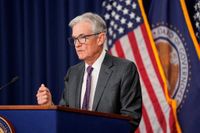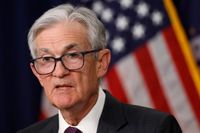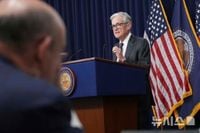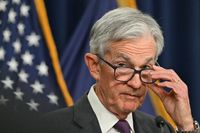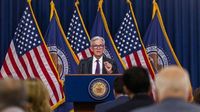Jerome Powell, Chairman of the U.S. Federal Reserve (the Fed), held a press conference on March 19, 2025, after the Federal Open Market Committee (FOMC) meeting in Washington, D.C., where he discussed the current state of inflation and interest rates. Powell revealed that inflation has begun to rise, partially due to the tariffs imposed during the Trump administration. He warned that the slowdown in inflation could be delayed as a result of these policies.
During the FOMC meeting, the committee decided to maintain the key interest rate at 4.25% to 4.50%, marking the second consecutive month of no change following three rate cuts last year. Powell emphasized the importance of waiting for clearer economic conditions before making any significant policy shifts, given the uncertainties surrounding trade and tariffs.
“If inflation is a temporary phenomenon that is expected to fade quickly without the need for the Fed to take action, it might be appropriate to just let it pass,” Powell said. He elaborated that the recent commodity price increases could be attributed to stockpiling prior to the imposition of tariffs. The possibility of tariff-induced inflation may be a fleeting one, but the Fed is keeping a close eye on long-term inflation expectations.
The Fed's latest revised economic projections indicate a growth forecast of only 1.7% for 2025, down from the previous estimate of 2.1%, highlighting concerns of slowing growth and rising prices. Additionally, the new forecast for the personal consumption expenditure (PCE) price index for 2025 has risen from 2.5% to 2.7%. The core PCE price index is expected to rise 2.8%, a slight increase of 0.3 percentage points from previous estimates.
Despite these figures, Powell does not foresee the U.S. falling into a 1970s-style stagflation, where high inflation coincided with stagnant growth. He stated that current unemployment rates are around 4.1%, which is close to full employment and contradictory to the high inflation scenario prevalent in the 1970s. Powell acknowledged that while recession risk has increased, he believes that it remains relatively low, around 25%. “The economy is overall quite strong,” he asserted, dismissing the notion that an economic downturn is imminent.
Amid these analyses, Powell confirmed that the Fed is looking to slow the pace of its quantitative tightening (QT). Beginning in April, the monthly redemption limit for Treasury securities will decrease from $25 billion to $50 billion while maintaining the cap for mortgage-backed securities at $35 billion. This reduction is seen as a cautious approach to maintain ample liquidity in the financial system amid concerns about the U.S. debt ceiling discussions.
Overall, Powell’s message to the market was one of temperance and caution—indicating that the Fed acknowledges the possibility of a delayed return to low inflation while re-evaluating interest rate policies as needed. He stressed that the Fed’s dual mandate of maximum employment and price stability remains a priority, despite the uncertainties that have emerged in recent months due to changing economic conditions.
Market reactions to Powell’s statements were generally positive, with both stocks and bonds responding favorably, as investors noted the Fed’s commitment to maintaining a balanced approach amid ongoing challenges. Powell’s comments reflect a strategy that prioritizes stability as the central bank navigates the complexities of inflation, economic growth, and trade policies.
As we look ahead, the prospects for the economy remain complex, with the Fed committed to monitoring short-term inflationary pressures while also watching long-term expectations carefully. Powell’s remarks signal a deliberate stance as the Federal Reserve approaches the delicate balance of fostering economic growth while controlling rising inflation brought about by external pressures such as tariffs.
